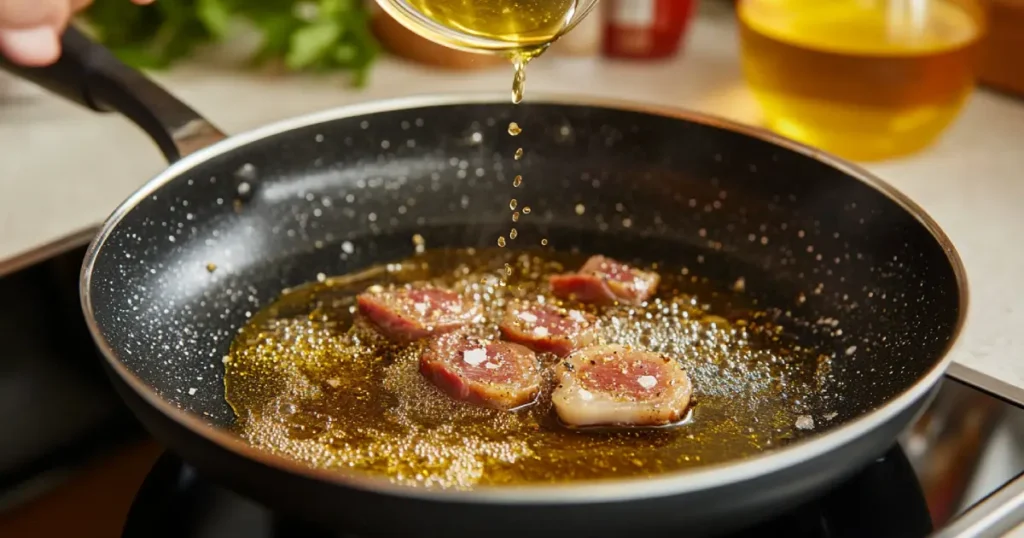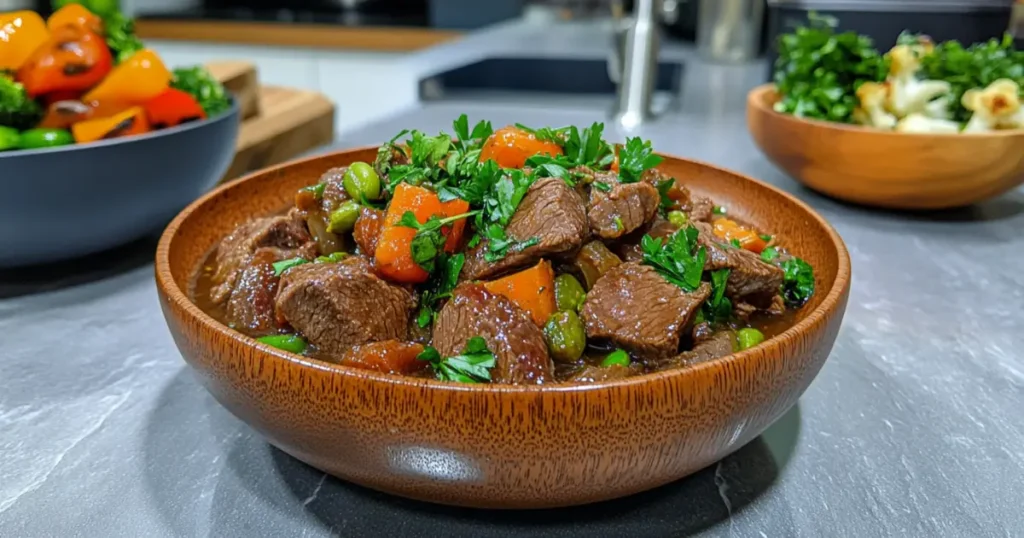Cooking beef kidney might seem daunting, but with the right techniques, it’s a culinary adventure worth taking. From selecting and preparing this flavorful organ meat to mastering diverse cooking methods, this guide has it all. Whether you’re aiming for a hearty stew or experimenting with new flavors, learning how to cook beef kidney will elevate your cooking game. Let’s dive into the details, starting with the basics.
Outline
Overview of Beef Kidney
What is Beef Kidney?
Beef kidney, part of the offal family, is a nutrient-dense organ meat derived from cows. Known for its distinct flavor and tender texture when prepared correctly, it has been a staple in various cuisines around the world. Its popularity lies not just in its taste but in its versatility.
Nutritional Benefits of Beef Kidney
Packed with protein, iron, and essential vitamins like B12, beef kidney offers a nutritious punch. It’s particularly rich in minerals, including zinc and selenium, making it an excellent choice for those seeking a wholesome, balanced meal. If you’re on a low-carb or ketogenic diet, this organ meat fits the bill perfectly.
Why Cook Beef Kidney?
Cooking beef kidney opens the door to an array of delicious dishes. When handled properly, it loses its strong aroma and becomes a rich, flavorful ingredient. From comforting stews to gourmet appetizers, how to cook beef kidney isn’t just a question of technique—it’s an art form.
Preparing Beef Kidney for Cooking
Selecting Fresh Beef Kidney
The initial step in learning to cook beef kidney is selecting high-quality kidneys. Look for ones that are firm, moist, and have a deep reddish-brown color. Avoid kidneys with a strong ammonia smell or discoloration, as this could indicate they’re no longer fresh. If you’re buying from a butcher, don’t hesitate to ask when they were harvested.
Cleaning and Trimming Techniques
Cleaning is crucial for removing impurities and achieving a pleasant taste. Start by rinsing the kidneys under cold running water to remove surface debris. Next, use a sharp knife to trim away the white fat and connective tissue inside. Be thorough but gentle to retain the meat’s structure. Once cleaned, cut the kidneys into smaller, manageable pieces. This not only makes cooking easier but also helps eliminate the strong aroma associated with organ meat.
Soaking Methods to Remove Odor and Enhance Flavor
Proper soaking is one of the key secrets to cooking beef kidney effectively. To neutralize its strong mineral taste and smell, soak the kidneys in a water-and-vinegar solution for at least two hours. Mix 1 liter of water with half a cup of vinegar for optimal results. Alternatively, you can soak the kidneys in milk for a milder flavor. Milk also tenderizes the meat, reducing its rubbery texture. Once soaked, rinse the kidneys well to eliminate any remaining liquid.
Cooking Techniques for Beef Kidney

Sautéing Beef Kidney
Sautéing is an efficient and straightforward method for cooking beef kidney. Warm a tablespoon of oil in a skillet over medium heat. Add the kidney pieces, seasoning them with salt, pepper, and a pinch of your favorite spices. Cook until the liquid released by the kidneys evaporates and the pieces turn golden brown. Sautéing brings out a rich, caramelized flavor, making it a favorite among beginners.
Grilling Beef Kidney
Grilling beef kidney is perfect for a smoky, charred flavor. Start by marinating the kidney pieces in a mix of olive oil, garlic, lemon juice, and your preferred herbs for at least an hour. Preheat the grill to medium heat and cook the kidneys for about 3-5 minutes on each side. The result? A beautifully grilled kidney with a crisp exterior and tender interior.
Making Beef Kidney Stew
Stewing is a classic method in how to cook beef kidney. Begin by sautéing onions, garlic, and bell peppers in a pot. Add the kidney pieces and brown them slightly. Next, incorporate chopped tomatoes, tomato paste, and a splash of soy sauce. Let everything simmer for 20-30 minutes, adding broth as needed. The stew’s flavors deepen as it cooks, creating a comforting, savory dish perfect for pairing with rice or bread.
Baking and Frying Variations
Baking is another excellent option for preparing beef kidneys. Season the pieces and bake them in a preheated oven at 375°F (190°C) for 20-25 minutes. For those who enjoy a crispy texture, frying works wonders. Coat the kidneys in seasoned flour and fry them in hot oil until golden brown. Both methods offer unique textures and flavors, giving you plenty of variety.
Flavor Pairing and Serving Suggestions
Best Accompaniments for Beef Kidney
Pairing beef kidney with the right sides enhances its taste and texture. Popular options include mashed potatoes, buttered rice, or crusty bread to soak up savory sauces. For a lighter touch, consider serving the dish with steamed vegetables or a fresh green salad. These options balance the richness of the kidney, making the meal more enjoyable.
Seasoning and Spice Blends
Seasoning is a key element in mastering how to cook beef kidney. Classic spices like garlic powder, black pepper, and paprika work wonders. For a bolder flavor, try thyme, rosemary, or a hint of chili flakes. If you’re feeling adventurous, experiment with curry powders or soy sauce-based marinades. These add depth and complexity to the dish.
Plating Ideas for Enhanced Presentation
Presentation matters! Arrange your cooked kidney on a vibrant plate, garnished with chopped parsley or cilantro. Drizzle any remaining sauce artfully over the dish, adding a touch of elegance. Serve alongside complementary sides for a complete and inviting meal.
For more delicious beef recipes, check out this beef kidney recipe with a French twist.
Common Challenges and Troubleshooting
How to Fix Overcooked Beef Kidney
Overcooked kidneys can become tough and chewy. To remedy this, simmer them in a flavorful broth or sauce for a few minutes to rehydrate and soften the texture. Adding a splash of vinegar or wine can also help break down tough fibers.
Reducing Strong Odors After Cooking
If the smell persists, ensure the kidneys were properly soaked before cooking. Adding aromatic ingredients like garlic, ginger, or onions during cooking can mask any lingering odors. Cooking with acidic components such as tomatoes or lemon juice can also neutralize strong scents.
Maintaining the Right Texture
Avoid overcooking by monitoring the process closely. Kidney cooks quickly, so keep an eye on the texture. It should remain tender, with a slight bite. If you’re new to how to cook beef kidney, practice with smaller portions to perfect the technique.
Frequently Asked Questions
What is the Best Way to Cook Kidney?
The best way to cook beef kidney depends on your taste preferences and experience in the kitchen. However, some tried-and-true methods stand out:
- Sautéing
Sautéing is quick, easy, and brings out the natural flavors of the kidney. Start by cutting the kidney into bite-sized pieces, seasoning them with salt, pepper, and your favorite spices. Heat oil in a skillet, add the pieces, and cook until they’re golden brown and slightly crispy. This method ensures the kidney retains its tender texture without becoming rubbery. - Stewing
For those who enjoy rich and hearty meals, stewing is an excellent choice. Slowly simmer the kidney in a flavorful broth with vegetables like onions, garlic, and tomatoes. Add herbs such as thyme and rosemary for depth. Stewing breaks down the kidney’s texture, making it soft and infused with the surrounding flavors. - Grilling
If you’re after a smoky and charred taste, grilling is ideal. Marinate the kidney in olive oil, lemon juice, garlic, and spices for at least an hour before grilling. Cook on medium heat for several minutes on each side. The result is a kidney with a crispy exterior and juicy center.
Each of these methods highlights the kidney’s unique flavor and texture, so choose the one that suits your palate best.
How Do You Clean and Cook Beef Kidneys?
Proper cleaning is essential when preparing beef kidneys to remove impurities and ensure a pleasant taste. Follow these steps for the best results:
- Rinse Thoroughly
Begin by rinsing the kidneys under cold running water. This removes any surface debris and helps eliminate residual blood. - Trim Fat and Membranes
Using a sharp knife, cut away the white fat and connective tissue inside the kidney. Be thorough but careful to avoid removing too much meat. Trimming ensures the kidney cooks evenly and reduces its strong smell. - Soak the Kidneys
Soaking is a crucial step when learning how to cook beef kidneys. Place the trimmed pieces in a bowl of water mixed with vinegar or milk. Let them soak for at least two hours to neutralize the strong, mineral-like flavor and smell. - Cook with Care
After soaking, rinse the kidneys again and pat them dry. Choose your cooking method—sautéing, stewing, or grilling—and proceed. Always cook kidneys on medium heat to avoid overcooking, which can make them tough.
Proper cleaning and soaking not only improve the flavor but also ensure the kidney is safe and enjoyable to eat.
Why Do You Soak Beef Kidneys?
Soaking beef kidneys is vital for improving their taste and texture. Here’s why:
- Neutralizing Strong Odors
Beef kidneys have a naturally strong, gamey smell due to their role in filtering waste. Soaking in a water-and-vinegar solution or milk helps to neutralize this odor, making the kidney more palatable. - Tenderizing the Meat
The soaking process softens the kidney’s texture, reducing its rubbery feel. Milk, in particular, acts as a natural tenderizer by breaking down proteins in the meat. - Removing Impurities
Soaking also eliminates any residual impurities, such as traces of blood or fat, which can contribute to the kidney’s strong flavor.
To soak the kidneys, mix one liter of water with half a cup of vinegar or use plain milk. Submerge the kidneys completely and refrigerate for two to four hours. After soaking, rinse them thoroughly to remove any leftover liquid.
Skipping this step might leave the kidneys with an overpowering taste that could turn off first-time diners.
How Can I Make My Kidneys Taste Good?
Enhancing the flavor of beef kidneys requires a combination of preparation, seasoning, and cooking techniques. Here are some tips to ensure your kidneys taste their best:
- Thorough Cleaning
Start with a well-cleaned kidney. Removing fat, membranes, and soaking the kidney eliminates much of the gamey taste. - Marination
Marinating is an excellent way to infuse flavor into the kidney. A simple marinade of olive oil, garlic, lemon juice, and herbs works wonders. Allow the kidney to marinate for at least an hour to let the flavors penetrate the meat. - Season Generously
Kidneys can handle bold seasoning. Use a mix of salt, black pepper, paprika, cumin, or even curry powder to enhance the taste. Adding fresh herbs like thyme or parsley during cooking also boosts the flavor profile. - Pair with Flavorful Ingredients
Cooking the kidney with aromatic vegetables such as onions, garlic, and bell peppers can mask any remaining strong flavors. Incorporating acidic elements like tomatoes, vinegar, or lemon juice balances the dish. - Avoid Overcooking
Overcooking kidneys can make them tough and intensify their taste. Cook them until just tender, ensuring they retain their natural juiciness. - Experiment with Sauces
Serving kidneys with a rich sauce can elevate the dish. A classic onion gravy, creamy mustard sauce, or tomato-based stew complements the kidney’s earthy flavor.
By following these tips, you can turn beef kidneys into a delicious and memorable meal. Don’t hesitate to experiment with spices and techniques to discover what works best for your taste.
In Closing
Cooking beef kidney can seem intimidating, but it’s a rewarding experience once you master the basics. Whether you’re sautéing, stewing, or grilling, the key is proper preparation. From soaking to seasoning, every step matters when learning how to cook beef kidney.
Remember to experiment with different spices, sides, and techniques to find your favorite combinations. Don’t hesitate to explore recipes from diverse cuisines, as beef kidney is a versatile ingredient that pairs well with various flavors. Above all, patience and practice will help you perfect this art.
For those eager to try more recipes, check out other articles on creative ways to prepare offal and organ meats. These tips and tricks will make your next meal both delicious and unforgettable. Happy cooking!



